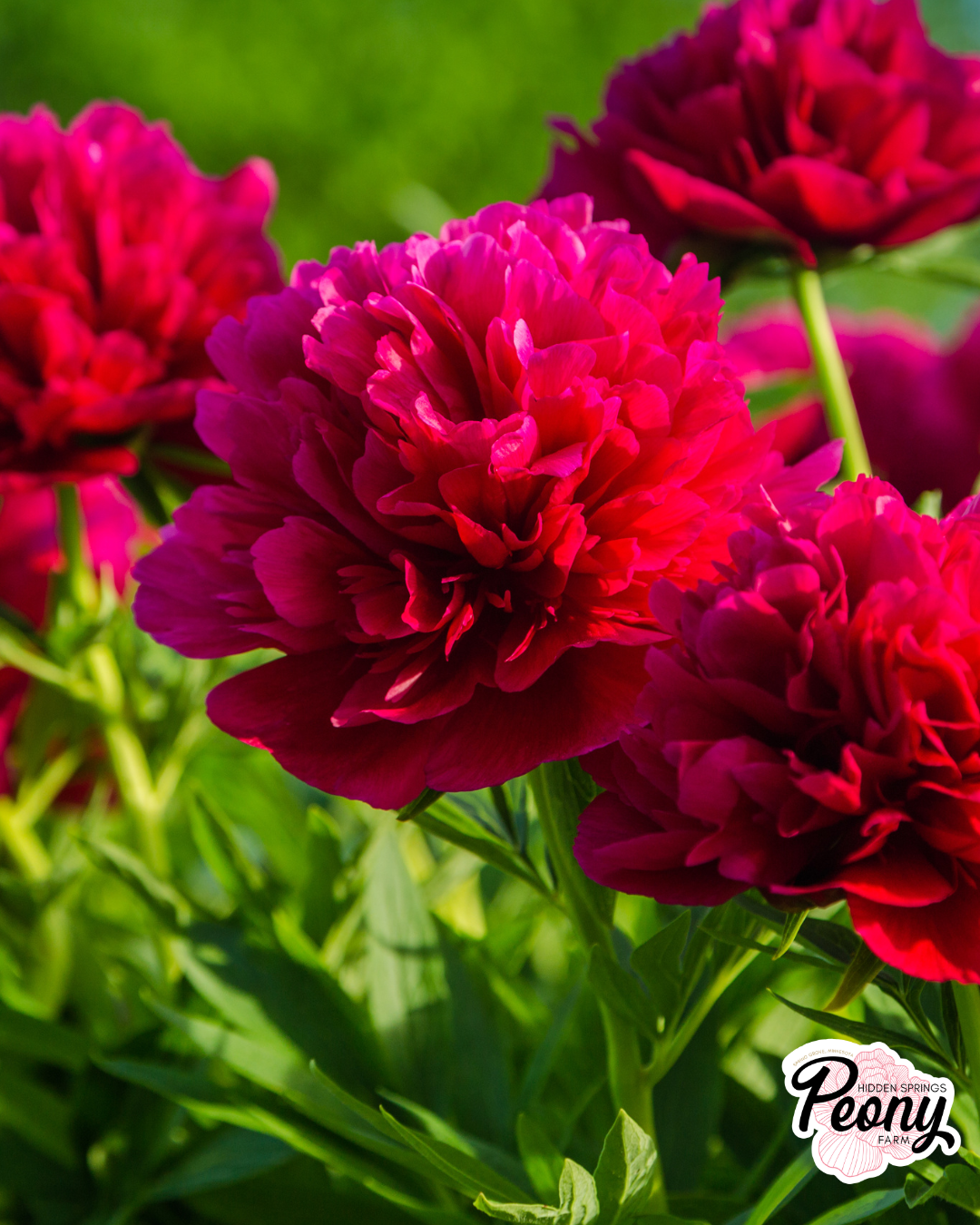
OUR BLOG
Sharing our knowledge of best practices when it comes to planting, growing, and maintaining peonies – among other plants and herbs – is something we’re incredibly passionate about.
When you succeed, we succeed. Below, we’ve compiled blogs on topics addressing common questions from our customers.
If you don’t see what you’re looking for, please give us a call or submit a request here and we’ll get right back to you. We may even use your question as the inspiration for our next blog!

The Process of potting up peonies
You all know I’ve been potting peonies like crazy… more than 1200 of them to get ready for spring here on the peony farm.
I have a three hour window in the afternoon, four days a week, when all the kiddos are in school and I can actually get something done.
Lately that’s potting up peonies to be sold in the spring here on the farm. There’s a process, some technique and a whole lot of trial and error that goes into it.

Gift a peony experience!
Experiences make amazing gifts. They stick with you in a way stuff just doesn’t.
Instead of adding more clutter, they give memories, moments, and stories you’ll talk about for years. They bring people together, spark fun, and make life feel a little fuller.

The best-selling peonies of 2025
From year to year, there are some peonies that remain fan favorites. Others rise to top of the popularity contest based on availability. Regardless it’s fun to see what you all are loving from season to season. See the list of our top peonies of 2025!

See the map! Where our peonies were shipped in 2025
It’s always fun at the very end of the season to see where our peony roots ended up. This year there were a few tweaks compared to last year with a final tally of 45 states plus DC on the shipping list. Wow!

It’s not too late to plant peonies
Whether you are looking to divide your own or purchase new, there’s still plenty of time. You do want to give your peony roots a little time to settle in and grow into their new surroundings before the big freeze. On average, even here in Minnesota our ground doesn’t freeze until into December so you’ve got some time.

Bigger isn’t always better for peony roots
We live in a world where bigger is almost always better and more is more is more. But that isn’t necessarily the case for peony roots.
For expertise on this I’m introducing your to Nate Bremer, a well-known voice in the peony world.

In spring and fall, water but don’t overwater!
If there’s one thing peonies don’t like, it’s being over-watered. Over watering can easily lead to root rot. But that' doesn’t mean peonies, especially newly planted peonies don’t need a drink once in a while!

First winter only: Mulch your new peony
This is for those of your who are planting peonies this fall. That means new roots sent in the mail or if you are dividing and transplanting some of your own.
I advise to apply a mulch over the top of your peony for its first winter only. In following years this won’t be necessary and in fact, it’s not a good idea to mulch peonies. For big, beautiful blooms, they need exposure to winter’s cold.

How our peony roots go from our field to your garden!
From our farm to your garden, here’s the process of how your peony roots go from our field to you!
Step 1: The Dig List
There’s a big spreadsheet I make up letting Bryan and I know how many of each variety we need to dig.

What to expect from our post-harvest sale
After all orders are shipped out I do an inventory check and reload the website with varieties that are still available. Those that have joined the waitlist for specific peonies will be given an early heads up that the sale has begun. Next everyone on this email list is brought into the loop. And finally the rest of the world is invited.

How to pair spring bulbs and peonies
When spring finally arrives after a long winter, nothing lifts the spirits quite like the vibrant blooms of early bulbs and the lush elegance of peonies. While peonies typically flower in late spring to early summer, spring bulbs such as tulips, daffodils, and crocuses can fill your garden with color much earlier. With thoughtful planning, you can plant these companions together for a seamless succession of blooms—and maximize your garden’s beauty without adding extra maintenance.

Fall is the best time to transplant and divide peonies. Here’s how!
There’s a reason we ship out our peony roots in the fall. It’s this time of year when the weather turns cool that peonies put their energy into developing roots that will supply the energy needed for next year’s stems, leaves and flowers.
For the same reasons, it’s a great time to divide the peonies you already have to create more beautiful plants for free! Spread them around your garden of gift them to a friend.
Pictured: Wilford Johnson

FAQ: When will my peonies ship?
It never fails, this is my most asked question this time of year, and for good reason! If you ordered peonies, you want to get them in the ground!
Here are some of the factors that determine when we begin harvesting:
Rainfall: We want roots to be nicely hydrated with well-developed eyes. A couple good soaking rains before we harvest is critical. Plus it makes digging them up a lot easier!

Sleep, Creep, Leap and the peony growth cycle
Whether it’s a potted peony planted in spring or a bare root planted in fall, peonies follow a very familiar pattern in their first few years.
The industry standard for a peony root is that it has three to five “eyes” or buds on it. All the peonies we sell meet or beat this industry standard.

The best peony varieties for beginners
Peonies are known for being extra hardy, long-lived and easy-to-grow. But there are some varieties that have proven themselves beyond the masses to be great choices for beginning gardeners and those just looking for proven varieties that are sure to shine in the spring garden.
Read below for the list!

Looking for stripes? Meet Candy Stripe!
There are a few varieties of striped, or variegated, peonies in our fields… and they are all super popular when they are in bloom.
As visitors wander the fields, most are drawn to these unique peony flowers that offer a little something extra. Candy Stripe, Independence Day, Circus Circus, and Summer Carnival are those that you’ll see growing here if and when you visit our farm.

Why fall is the best time to plant peonies
Fall is the absolute best time to plant peonies. That’s why you often see them for sale as bare roots in the fall. We, of course, sell them in this way!
There’s one main reason why fall is the best time and it all has to do with the magic of roots.

How to grow peonies from seed
Most peonies are sold as either potted plants or bare roots. There are two reasons why.
The first is that peonies grown from seed are not true to their parent, meaning they don’t end up being the same flower as the plant they came from.
And two, it takes a little more time and a lot more effort for a peony planted from seed to produce a bloom.

Should you remove your peony seed pods?
DEADHEADING PEONIES IS GENERALLY A GOOD IDEA
After your peonies are done blooming there are a few reasons to cut those old flower heads off. But there’s also one big reason you might want to leave them on!

Peony fragrance is a personal experience
Fragrance is a quality in peonies just like color, form and height. Whether or not a peony has fragrance and whether or not it’s a pleasant fragrance is determined by it’s parent plants.
Many of the old fashioned (lactiflora) peonies that were bred in China and Europe centuries ago have excellent fragrance that will instantly bring you back to grandma’s garden.
A past article from the American peony society that I came across this past week said it very well.

